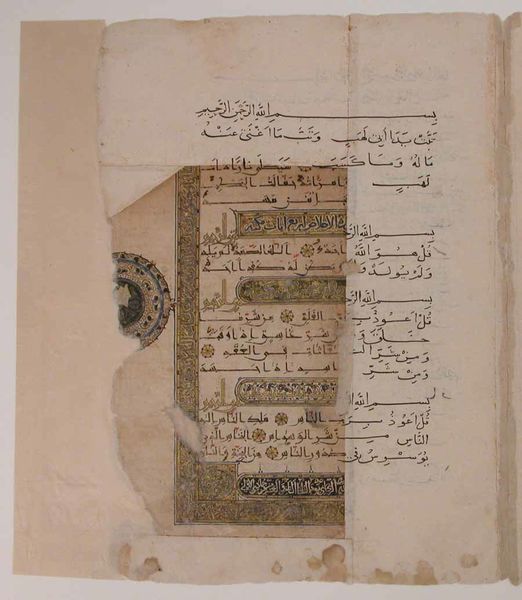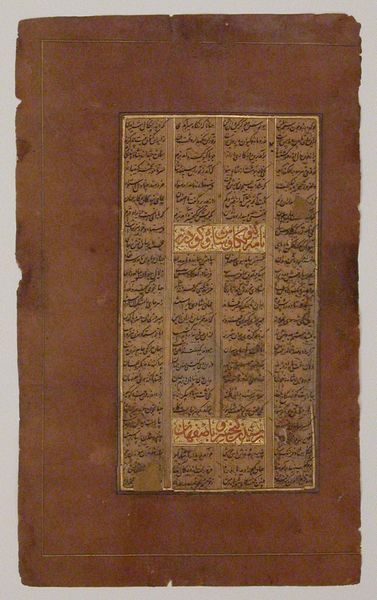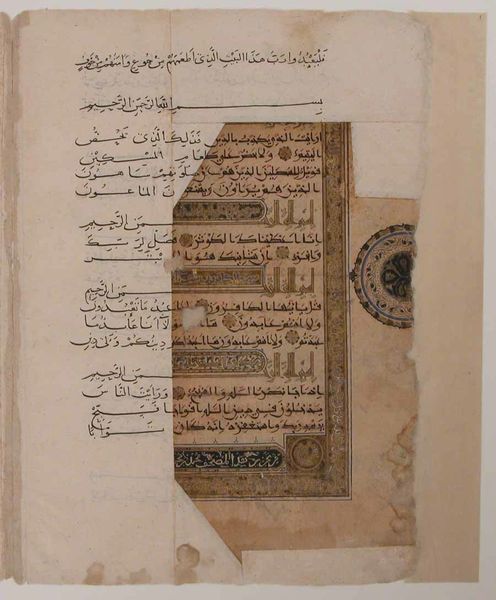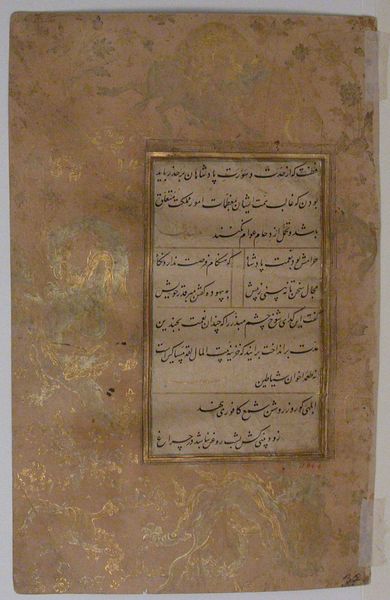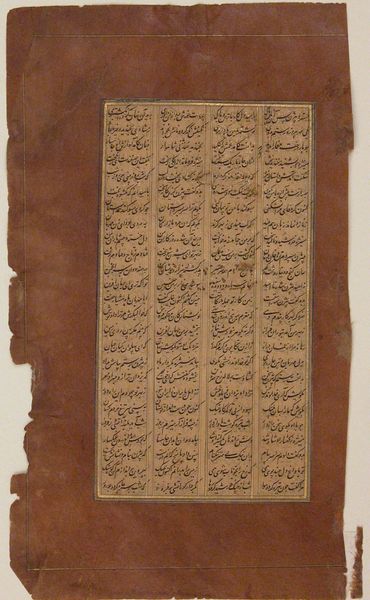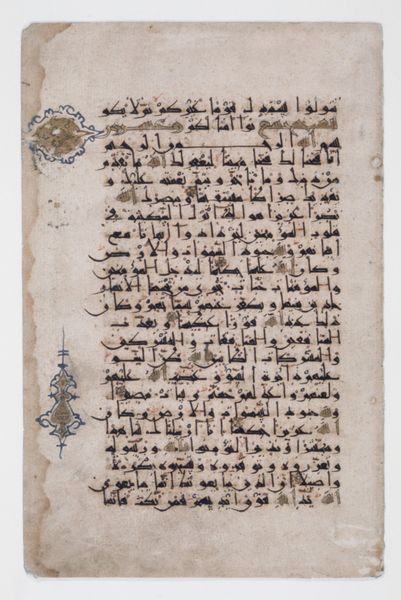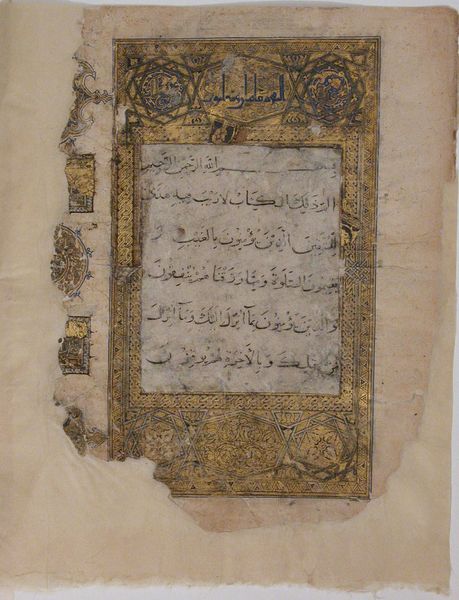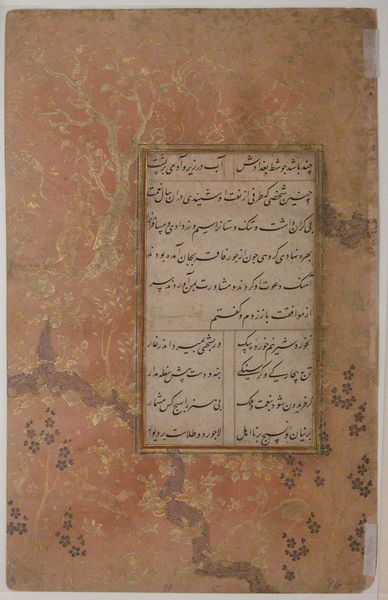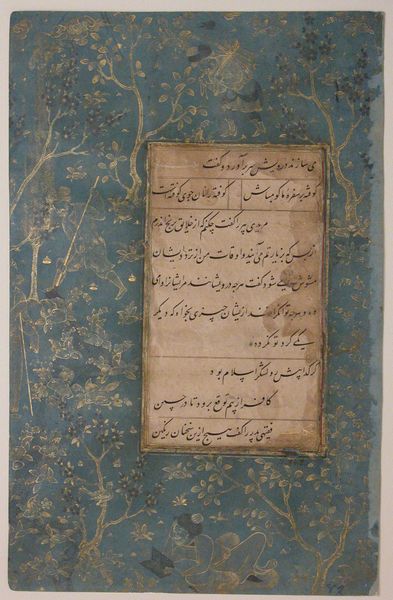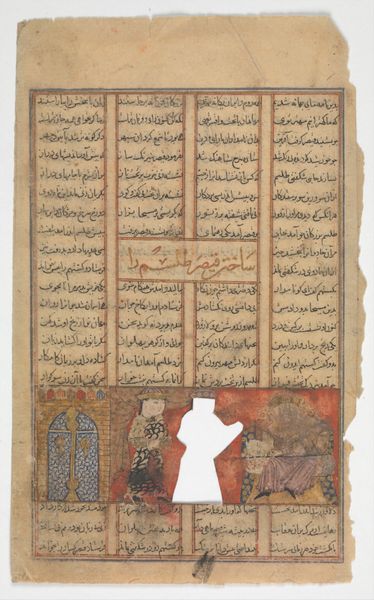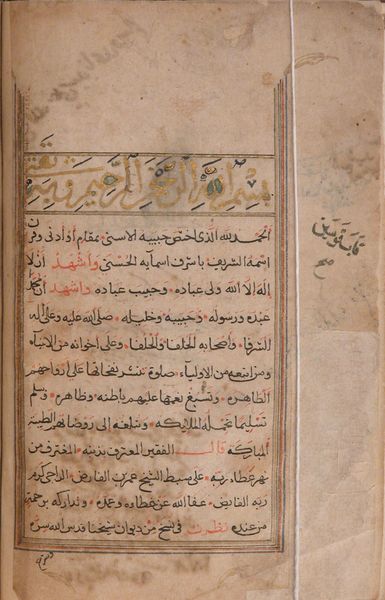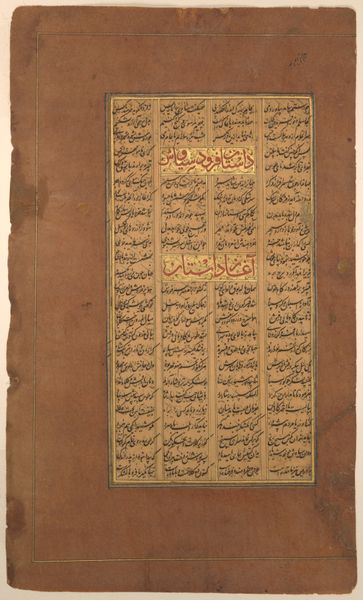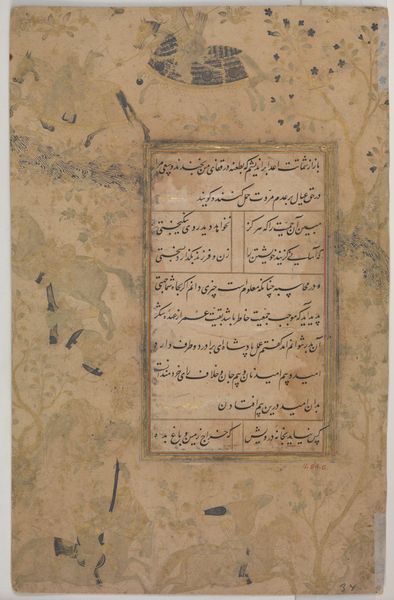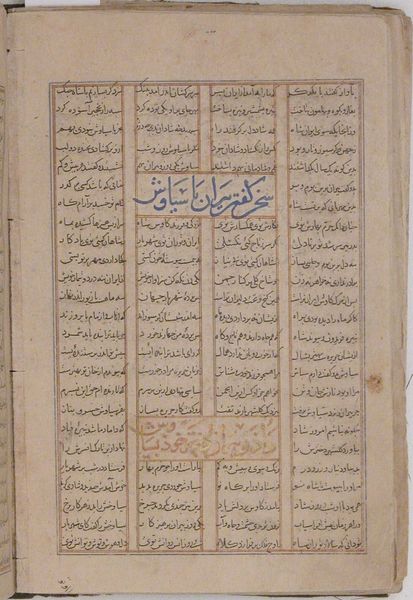
ink
#
ink
#
islamic-art
#
calligraphy
Dimensions: H. 7 11/16 in. (19.5 cm) W. 5 1/8 in. (13 cm)
Copyright: Public Domain
Curator: This ink on parchment is a folio from a Qur'an manuscript attributed to Muhammad al-Zanjani, and dates to between 1112 and 1162. The visual experience is dominated, of course, by the elegant calligraphy. Editor: Immediately, it strikes me as a study in contrasts – the crisp, almost severe lines of the text against the delicate, ethereal floral illuminations to the right. There's a sense of both strength and fragility in the same composition. Curator: The script here is a form of cursive, and we see the text meticulously structured. Notice the horizontal emphasis and the deliberate spacing, which isn't simply aesthetic but helps to visually organize the text for ease of reading and recitation. Editor: Absolutely. And the teardrop and floral motifs that frame the text are particularly evocative. The cultural memory tied to floral motifs in Islamic art evokes themes of paradise, gardens, and the divine. Do you feel those interpretations are accurate for these, or does the form here resist any potential sentimentalism? Curator: The rendering leans towards stylized representation, a conscious choice to move beyond the purely representational, to evoke a more profound sense of order, balance and sacred beauty, rather than straightforward representation. It also echoes geometrical shapes found elsewhere in Islamic arts. Editor: Indeed, I see that. The geometric rigour balances the natural form nicely, so the page evokes a kind of formalized serenity, if that makes sense. The arrangement gives the verses on the page an otherworldly presentation through very terrestrial structures like grids and flowers, binding the divine and earthly. Curator: It is this binding you speak of that holds importance for this work. Through this structural treatment, calligraphy transcends pure communication; it aspires to visually represent the ineffable, acting as a gateway to spiritual understanding. Editor: I find myself deeply drawn to the symbolic richness within it. These artistic choices really magnify the spiritual presence communicated in the verses themselves. Curator: In closing, the aesthetic qualities, while pleasing in themselves, always point back to the core message. Editor: Yes. It serves as a reminder that the most profound meaning can often be found through attentive visual study and its context, regardless of religious faith or experience.
Comments
No comments
Be the first to comment and join the conversation on the ultimate creative platform.
